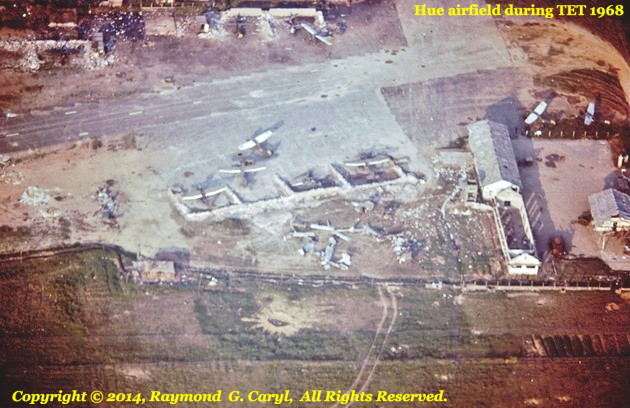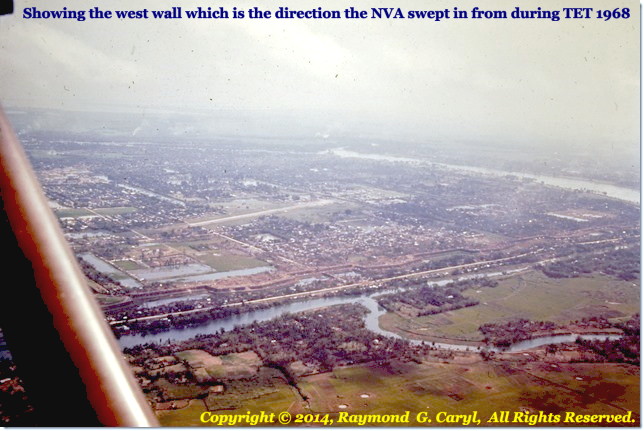THE DAY I RODE HOME IN A TRUCK,
TET, 1968:
by Captain Harold L. Vail, Catkiller 27, Hue
Tet Offensive 1968—Vietnam As I Remember
Transcribed and arranged by Donald M. Ricks, Editor. All photographs are copyrighted by Harold L. Vail.
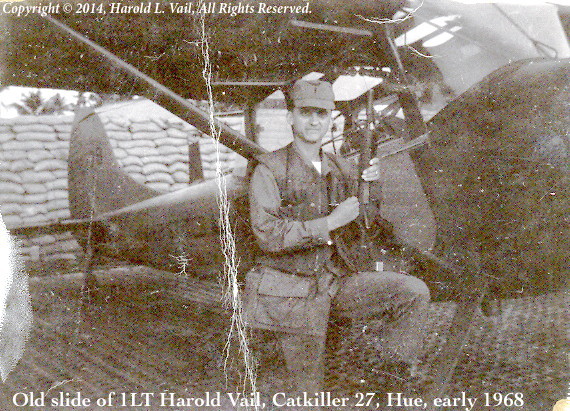
The night prior to the 1968 Tet offensive I was in the Officer’s barracks located in the Hue compound. In the middle of the night I was notified of enemy activities north of Hue. They needed a Birddog (L–19/O–1) in the air to see if we could determine what enemy troop movement was happening. I suited up and acquired a jeep to head out to the airfield and observe what the activity was. Driving out was quit and dark and uneventful.
When I arrived at the field a South Vietnamese observer was there and we took an aircraft and started our search of the area. First we did a random pattern north south then east west and stayed around 500 to 700 feet. We didn’t have a good bright moon that night to see the ground. We weren’t sure what we would see because we didn’t have any information as to what was happening on the ground. We manly were trying to see if there was some vehicle movement or any kind of lights. The initial search was 1 to 2 hours of going back and forth over the Citadel and north of the Citadel. I finally decided I needed light, so I had the artillery unit fire off rounds to light up the area. The artillery was ARVN and I had a hard time getting them to give me rounds back to back so I could see movement. They would shoot off one round and it would be minutes before I could get a second one. We flew for a few hours trying to get some type of indication as to what the movement was on the ground. Because of the delay in the rounds, it is obvious now that the enemy heard the blast of the gun and froze in place until it went dark again.
I got very flustered because of the lack of response from the Arvn artillery. Not sure if it was lack of them trying or lack of luminous rounds but without any success, we returned to the airfield. We landed and the only one on the field was a couple of Marine guards.
I asked the Arvn observer if he needed a ride and he told me no that he would have someone pick him up. Later, I find that, when I left the North Vietnamese over ran the field and killed my observer and the Marines hid in the river bank and made their way back to friendlies.
The enemy was waiting for me to stop searching and then commenced their attack. This tells you of the respect the enemy had for the forward observing aircraft.
When I left the field I drove back to the compound again uneventful and if I remember it was around 4 AM. I was tired and put my gear away and started to lie down on the bunk fully dressed. When my leg hit the bed a rocket explode on the south side of our barracks, TET began, maybe 10 feet from the end of our barracks. Everyone proceeded to the bunker outside our entrance to the barracks.
I tried to sleep for a short time but that was a waste of time and Mother Nature called and I wasn’t going to stay in there any longer, this was about day break. I went out to go to the latrine and felt a lot better. (Too much detail?) I checked with everyone asking if they wanted drinks while they were still cold in the fridge. Proceeded to the widow on the south side where we were getting small arms fire from the building outside the compound. There were some Marines in a sand bagged location below the window and I watched to see if I could help. The Marine tanks were firing on the building making it crumble.
I went back to our bunker and we had an enemy soldier about 20 feet from the bunker that the tower guard had spotted and the guard made him surrendered. Telling him to strip, making sure he didn’t have any weapons or explosives, before he came inside the compound.
Note: I will send pictures of the compound and Hue
We received word that a chopper was coming in to evacuate the pilots. I stayed behind to make sure the enlisted personal were returned to Phu Bai. Couple of days later we were able to send the enlisted back to Company Headquarters. I stayed to try and retrieve our personal gear. While the enlisted were here they took on the role of infantry and helped with the security. I was not with them enough to know what part they played in support. They didn’t want to go to Phu Bai but they were needed there as much as at Hue. During this time our supplies were scarce. Everything was rationed. Water was short and we could only use it for drinking it was located in a tanker in the middle of the compound. The main power was out but we had generator power. Most of the vehicles in our parking lot were blown up. They were about 50 feet from our barracks but the building was still in tack. The communication building was the structure having the most direct hits. They obviously knew the comm. Building and its importance. It appeared anything with a tall antenna had direct hits including the vehicles.
After the enlisted were sent back to Phu Bai I found our deuce and a half. The Marines were using it and I went to their Platoon Leader and ask if they didn’t need it, I would like it back so I could return our gear back to our Company location. He told me to take it and I gave them all the Pepsi I had left. This was a fair trade for both of us.
I really don’t remember how long I was at Hue before going to Phu Bai, probably a few days.
I loaded the truck made sure it was fueled and checked with the convoys that would be heading to Phu Bai. I was told they were leaving in the morning at 6 AM and where to hook up. I went out to the location and no convoy. Waited for about an hour and told myself tough I am heading out. Put my rifle across my lap and departed. Good thing I learn good habits flying therefore I watched both sides of the road for activity. About a third of the way to Phu Bai I spotted numerous corpses across the road and along the side (not Americans). I told myself it wasn’t my time and just kept on trucking. The trip didn’t seem to take all that long because I spent a lot of time looking and searching around me for any movement. During the whole trip I didn’t meet one vehicle and the road was in pretty good shape. I arrived back without an incidence, drove to the motor pool and left the truck. Went to report that I was back and I was told I smelled. When you are without bathing after a while you don’t notice yourself as smelling. That’s what a week without bathing will do.
The next day I took a birddog to return to Hue and access the damage. Flew over once and decided I would land at Hue airfield. I didn’t expect to see every aircraft had been blown up, too include those aircraft that were not assigned to the 220th. The method they used to destroy the aircraft was a large explosive big enough to blow the front of the plane. I walked over to check out the pilots’ lockers and I was going to retrieve my helmet and gear but they had been pilfered and nothing left. Took pictures and returned to Phu Bai. The runway had several holes but not sure if it was the enemy our friendly fire. One thing good about flying a Birddog it will land almost anywhere.
There were a lot of good Marines and Pilots that lost their lives. The US was told not to bomb Hue because of it being an Imperial City. It still had a lot of damage from artillery. The ARVN were allowed to fire whatever they wanted. Note: I made an audio recording of the events in the bunker the first night and to my regret it was misplaced when I returned to the states.
A friend of mine who went to OCS with me at Fort Benning came to see me the day prior to Tet. He was assigned to an infantry unit and had been in country for 9 months without seeing any action and told me he won’t visit me again—it was too dangerous. With everything that happened I knew from the first that I would make it home. I well relate some other times in Vietnam that I remember. I know many things happened to all the pilots. I just wanted to relate a few of course this is not everything. Mostly because when I flew it was a mission and I really didn’t think about it being anything but a mission.
While on a mission one day I received a call that a unit of Marines were tied down and could not move because of the number of enemy. This was up by the DMZ and I had a Vietnamese observer in the back seat. I proceeded to the location and got a fix on their location. Received heavy ground fire trying to help the unit on the ground and my observer said we needed to leave and I told him, no. A few minutes later as I was trying to help the Marines he hit me on the back of the helmet and wanted to head to base. I was just a little upset and I reached around got him by the collar and told him I was going to throw him out the window if he said another word, he stayed quite.
There were some returning navy bombers coming from the north that still had some pay load and I directed them to the enemy and they made the first pass. It was close to the friendly but the unit commander said, do it again. The second pass was just as accurate and the Marines were able to retreat back. I continued with artillery fire in the meantime my left tank went dry and I had less than half on the right tank. Continued to direct air raids and artillery fire, it started to get twilight and I checked again with the unit on the ground and they told me they were safe. I had less than a quarter tank of gas and I would have to stop in Quang Tri for refueling. I ask the ground troops to keep me insight as much as they could because I wasn’t sure if I had enough fuel to get to Quang Tri. I got on approach and they had strong head winds and without the extra weight of fuel it was a challenge to get it on the ground and to taxi. I had to have the ground crew to keep the aircraft from tipping. Refueled and checked the aircraft to make sure I didn’t have any damage making us not airworthy. Several rounds hit but nothing to stop me from returning to Phu Bai. The hairiest one was one that went thru the fuselage at my foot level. The only way I could not have had both my feet shot was that I must have been in a bank, with one foot higher than the other, when it came thru missing me.
When I got back they wondered where I was I told them I was too busy to report my location. I was also told they had gotten word that a Catkiller was at the DMZ and figured it was me.
Another mission was south of Phu Bai. I was searching the region south of Phu Bai when I spotted a Battlion size of the enemy moving toward Phu Bai. I brought in artillery and aircraft fire while receiving ground fire. Also helped the ground troops to locate them and this changed the enemies mind and they did not attack Phu Bai. Don’t remember how long I was on location. Used up most of my ammo I carried.
I think the most nerve racking time was when I spotted for B–52s. The reason it is nerve racking is they are so high I could not see them and then the mountain lights up with white smoke. I could just imagine if I wasn’t out of the drop area, there would have been nothing left but a grease spot. Another when I was checking out the coastal area east of Hue. I started taking fifty caliber fire from the ground, and there was an American unit close by so I had a rocket on board and came around to mark the gun position. I marked the position and when the unit got to the site they told me that I had hid the target right on and they didn’t need to do anything. Luck is luck.
A Green Beret requested to be flown over an area to search for a disoriented team out in the jungle so I took him up to help search for them. We searched for a few hours checking over a very dense jungle area. We were normally at about 500 feet during the search. He finally made contact with the team and was able to get them headed in the right direction. The point of this story is the poor guy was air sick from the time we took off until we returned, but he would not give up. It was also one of the hot days. The aircraft had to really be fumigated. Dedicated soldier, thank goodness.
I was assigned a mission to the far west along the border to look for convoy movement. I went all the way to the border and sited the convoy going into an opening on the top of the mountain. Called in the location for bombing but couldn’t wait around because I was low on fuel on both tanks and I had a distant to get back. I was solo that day and I tried the pucker factor to give me more range. When I got to Phu Bi it was socked in and I was above the clouds. I called the tower and they gave me the ceiling, so I just descended and broke out in the clear and landed with about 3 gallons of gas.
I can’t remember how many times that I drew fire and would return fire thru the open window, drop grenades stuck in cups and shot a 40 mm grenade launcher. I tried to see how accurate I could drop a smoke grenade.
This is just another story—sometimes it is good to get it out. When I first got into country, around 1 month later, the unit had a tradition of taking the departing pilot to dinner. We were going to down town Hue, so I strapped on my revolver and the other pilots said I would not need the weapon. I left it at the barracks. We drove to down town and I am in the back of the vehicle, therefore I had no idea where we were or where we were going. We arrived at a café that had walls around the building and the tables were outside. We ordered and about that time some Viet Cong tossed grenades over the wall. I was lucky because I didn’t get a scratch but almost everyone else was hurt. Everyone ran under cover and of course so did I, but I returned to the table to get my camera. I wasn’t scared just confused because I had no idea where I was. Someone said to help the wounded to the truck and for me to drive because I wasn’t hurt. Whoever it was seemed to think I was scared, but I didn’t have time to be scared just did not have any idea as to where we were and thinking, ‘why did I listen when they said to not bring a weapon.’
I went out to the truck and helped people get on board. We had two vehicles and the other driver knew how to get back so I followed him, and we returned without and other problems. While we were loading I looked around the area and didn’t see any movement. Whoever tossed the grenades did so and departed.
The worst one wounded from our unit was hit in the stomach and there were some Australians seated behind us were killed.
This was one weird war. I had a good Vietnamese observer who drove home from the airfield and a child threw a grenade in the vehicle. He lived thru the ordeal. After all this, is when I decided someone was watching over me and I would go home unharmed. I don’t think there was a day I didn’t fly—as much as the weather would permit—and sometimes when it was marginal. I always thought of the time I spent in Vietnam as doing my duty as a career military man. When I flew I went looking for the enemy. I flew with the Marines, Army and Vietnamese. I respected the work and dedication each one showed and I am sorry that the war was handled by politicians.
Copyright © 2014, Harold L. Vail, All rights reserved.
PHOTOGRAPHS BY HAROLD VAIL:
Correrctions and identities appreciated:
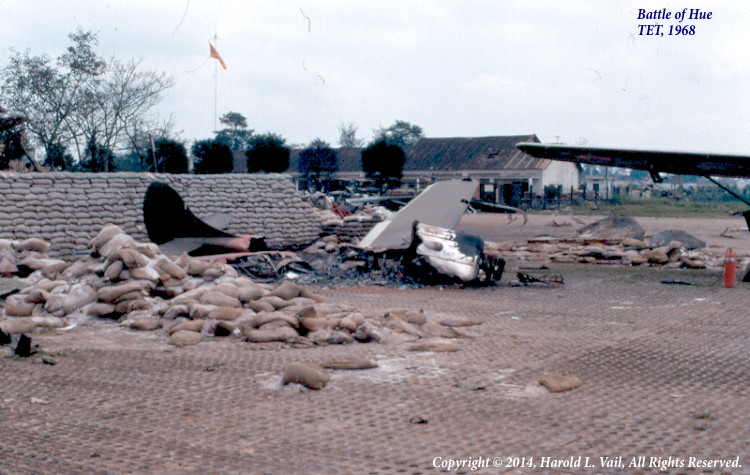
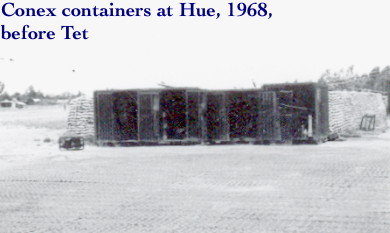
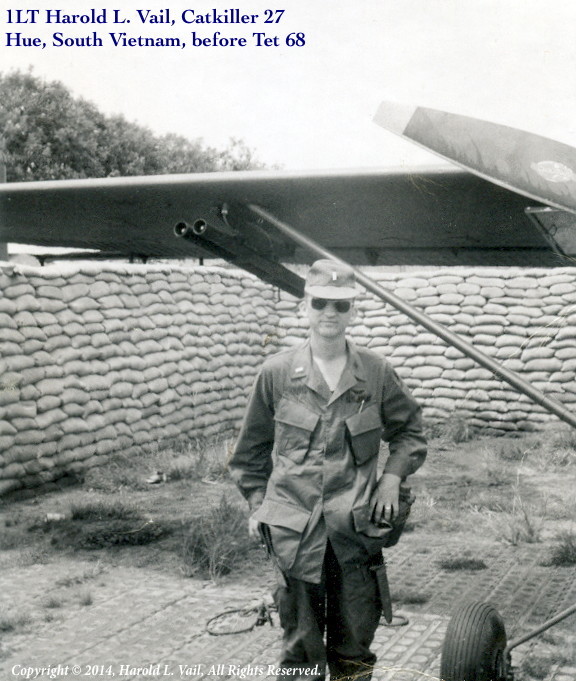
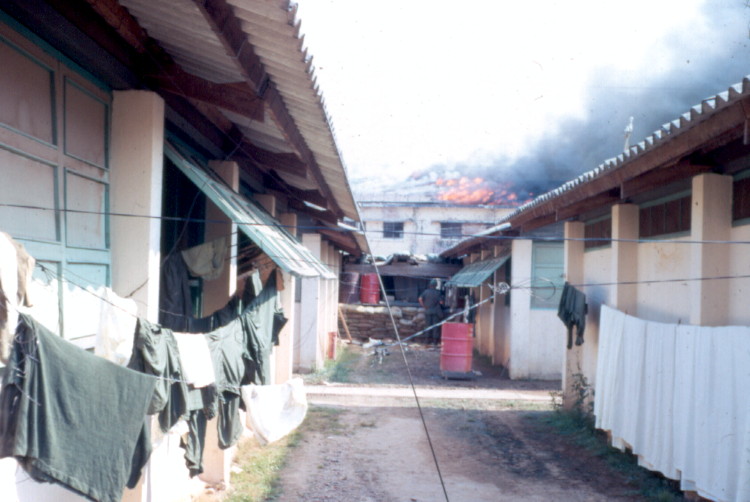
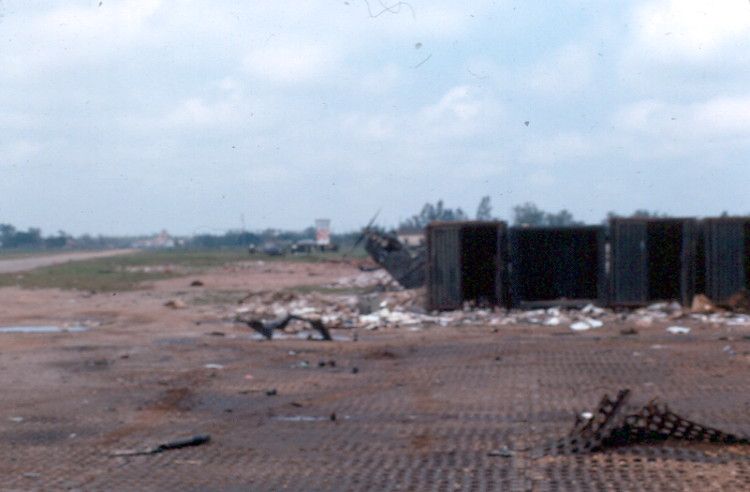
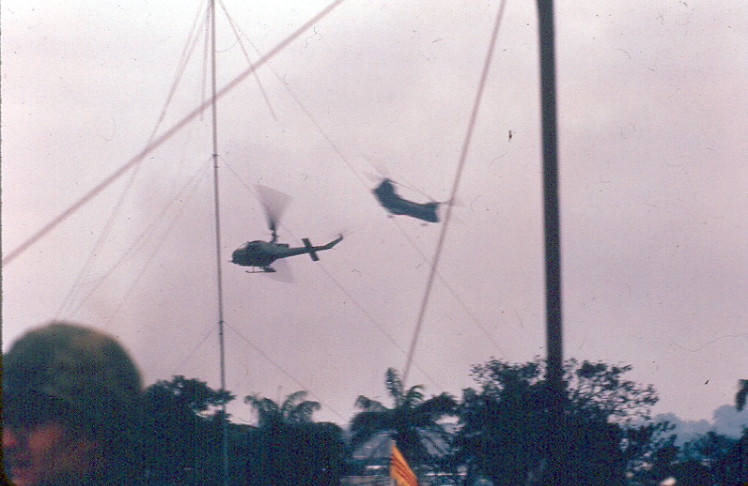
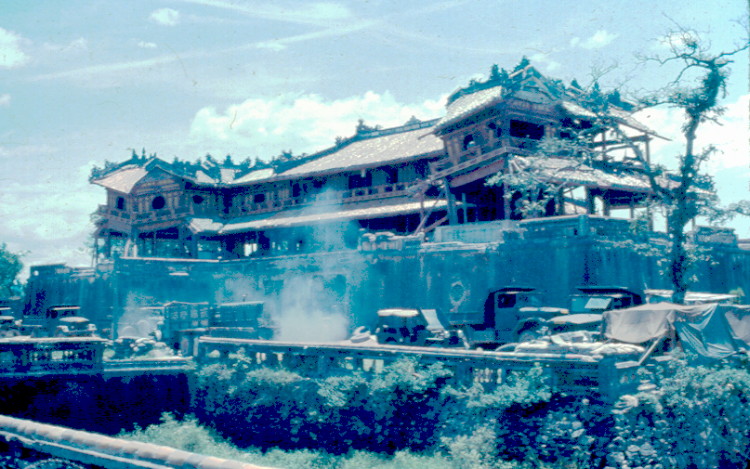
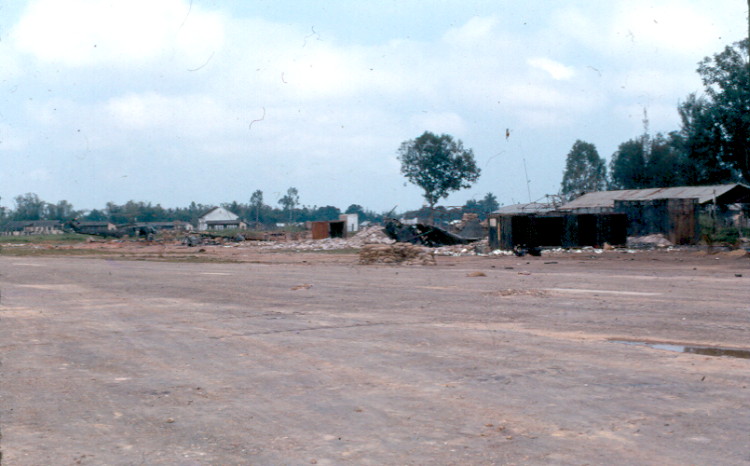
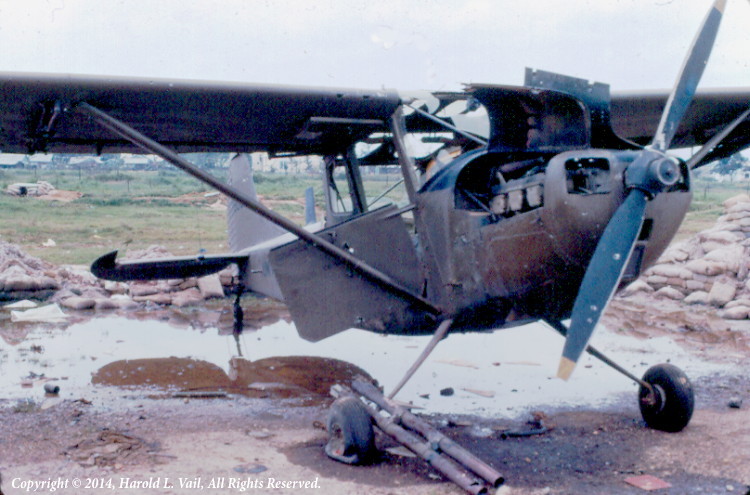
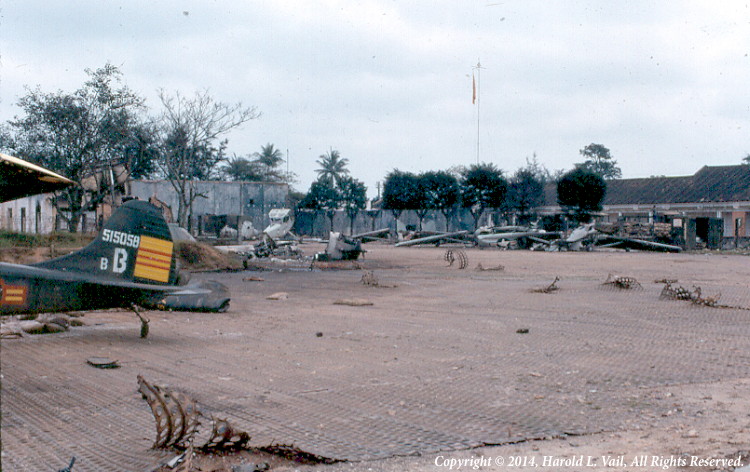
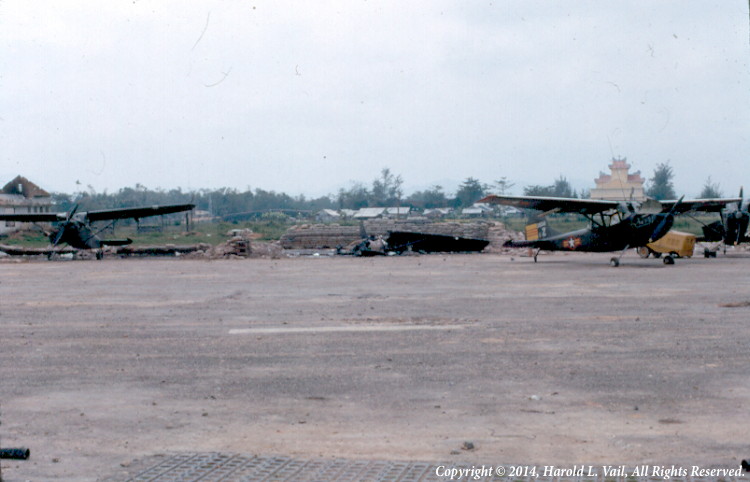
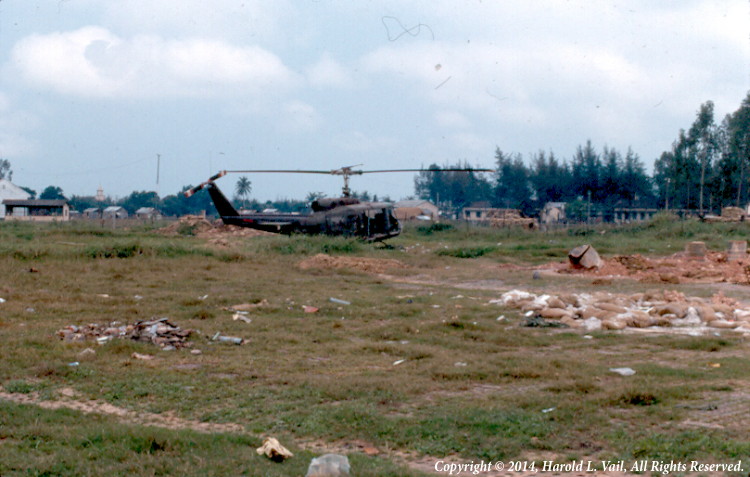
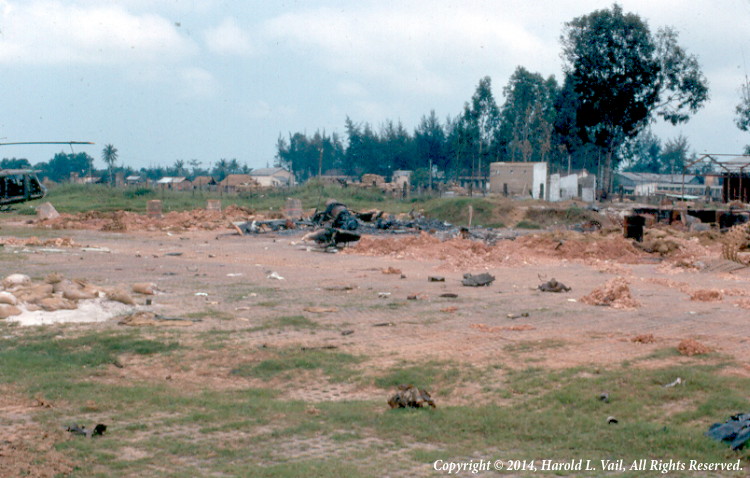
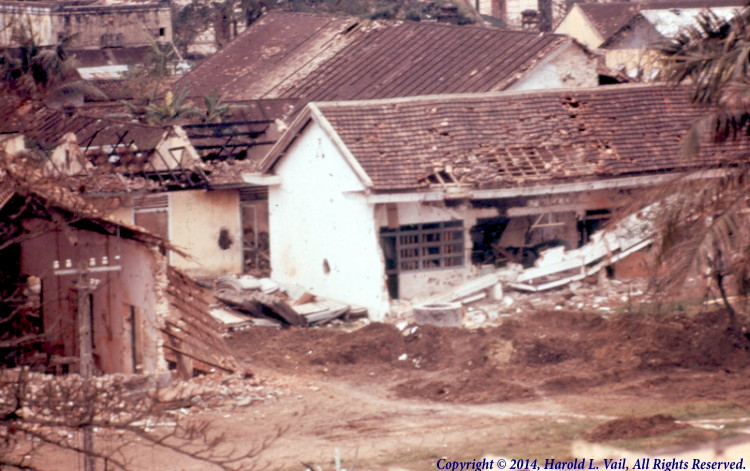
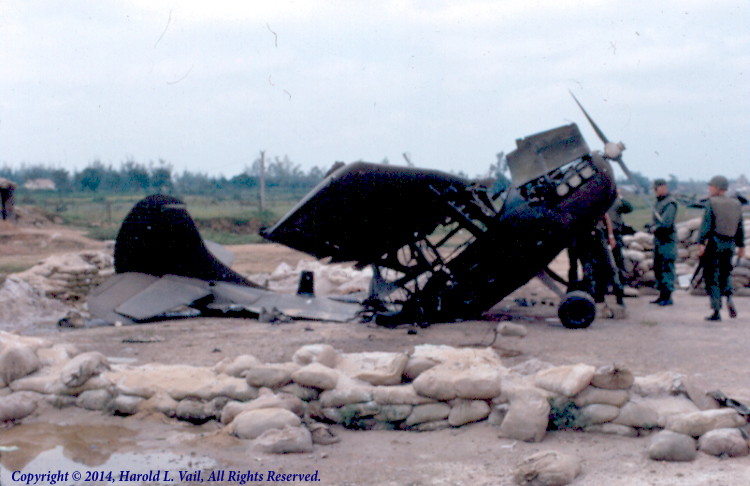
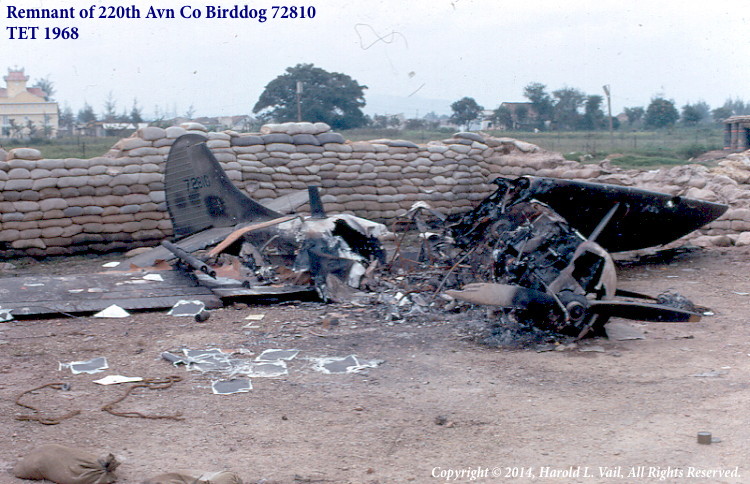
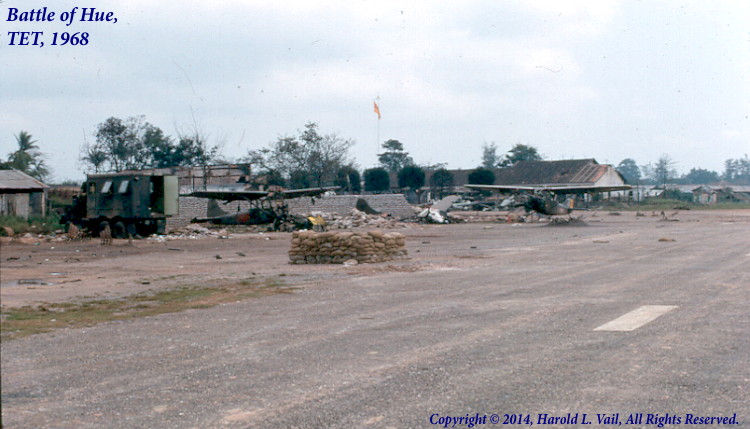
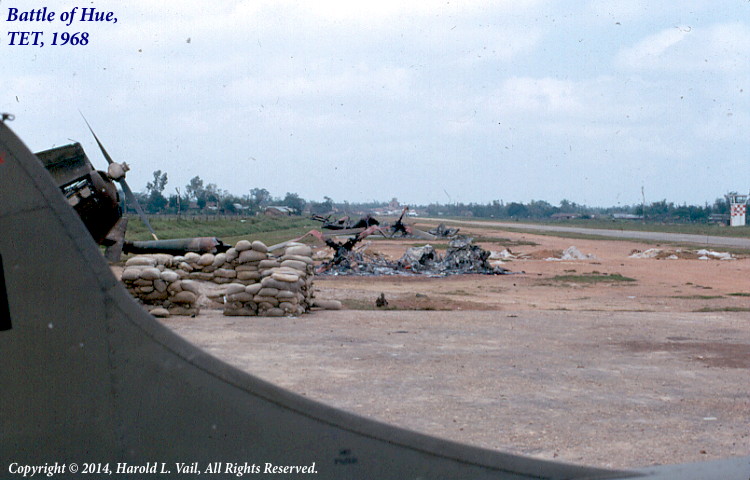
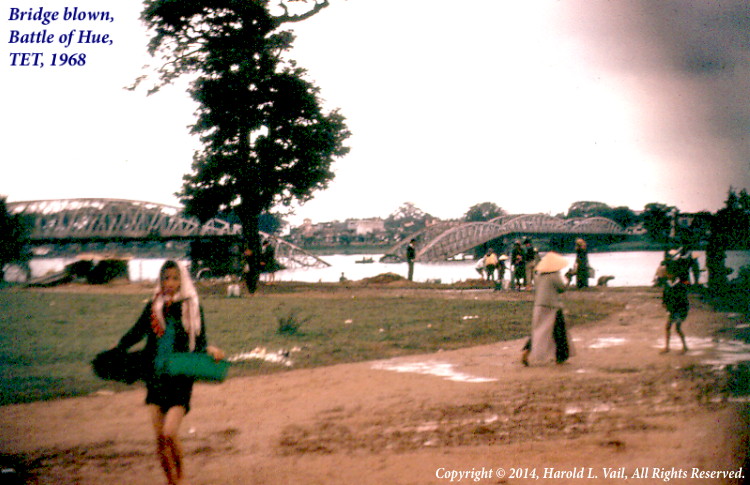
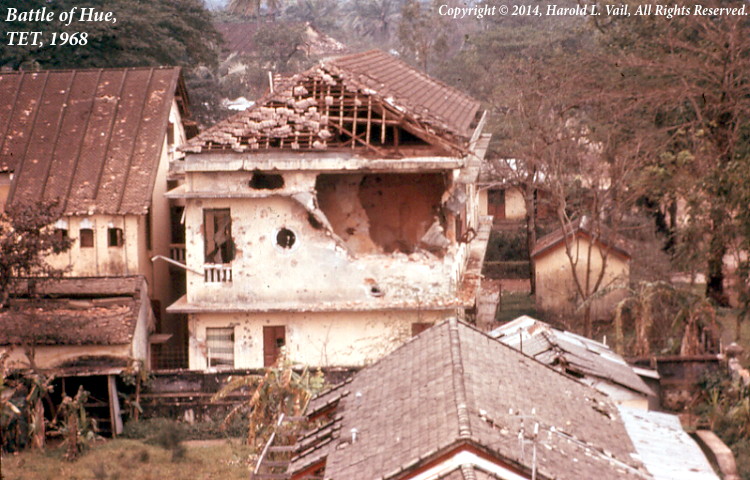
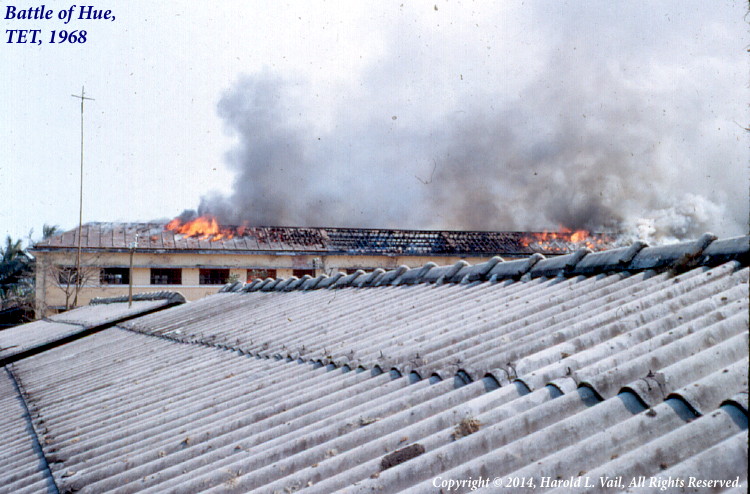
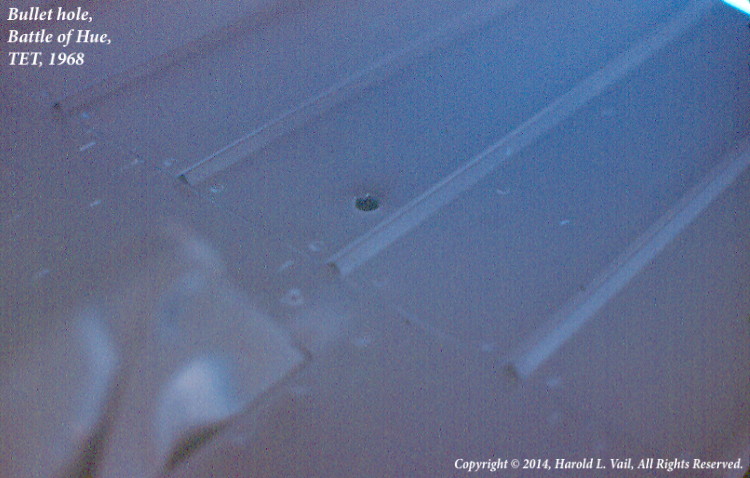
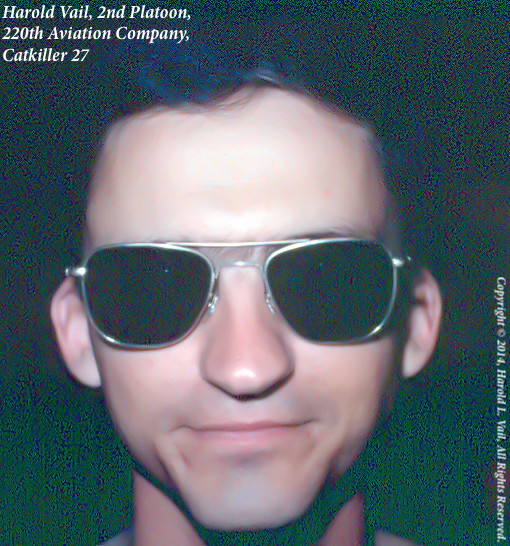
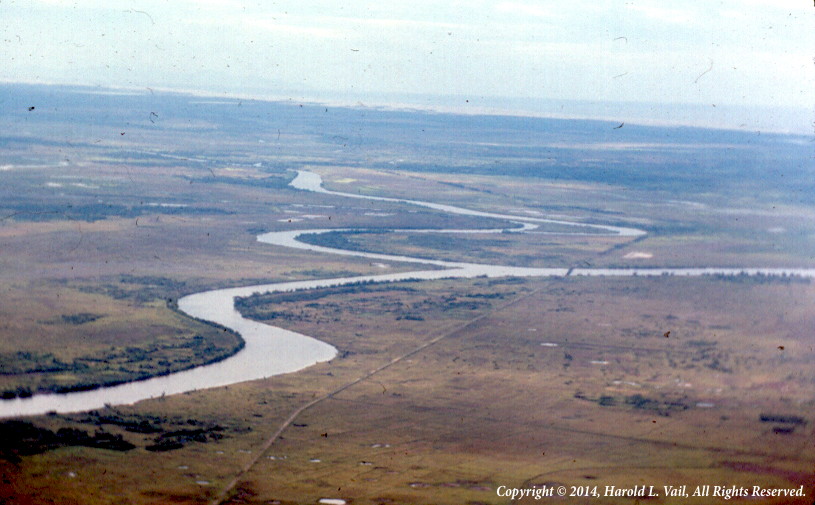
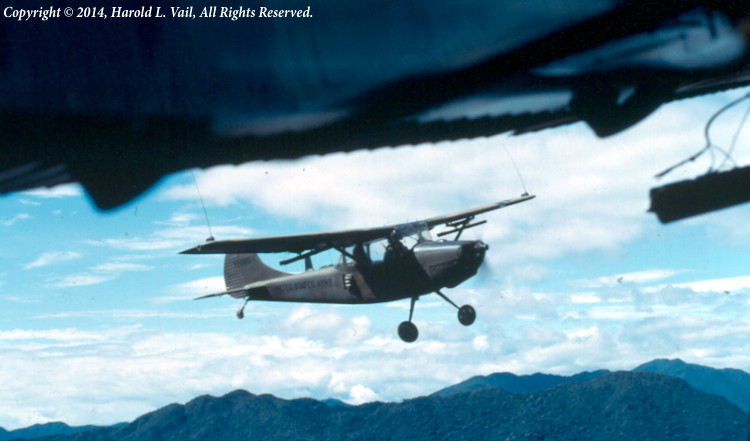
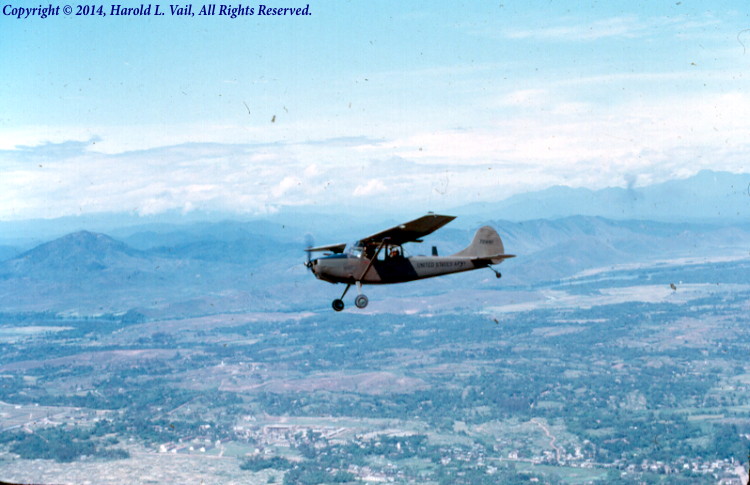
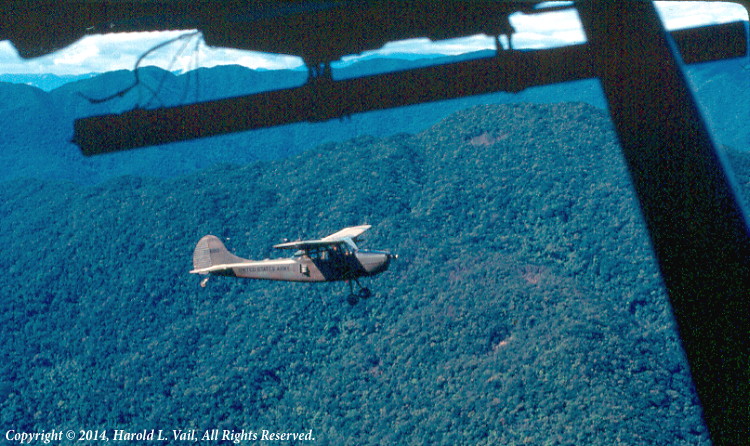
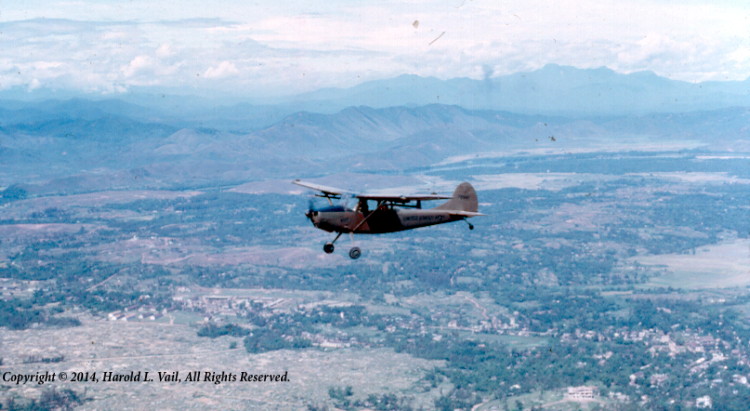
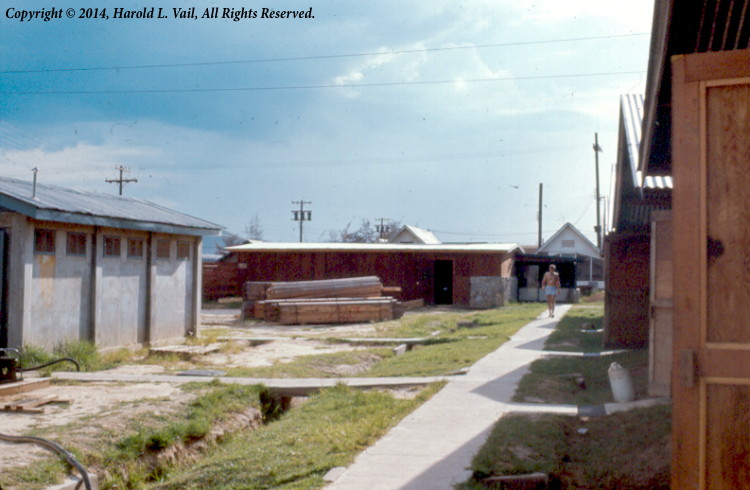
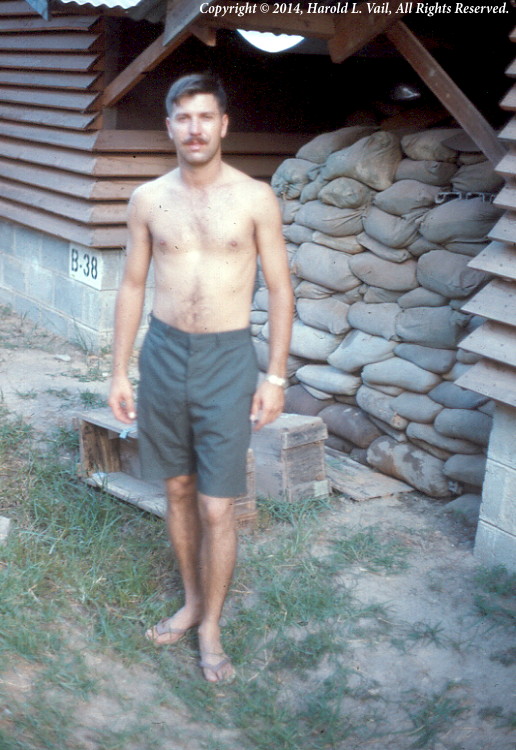
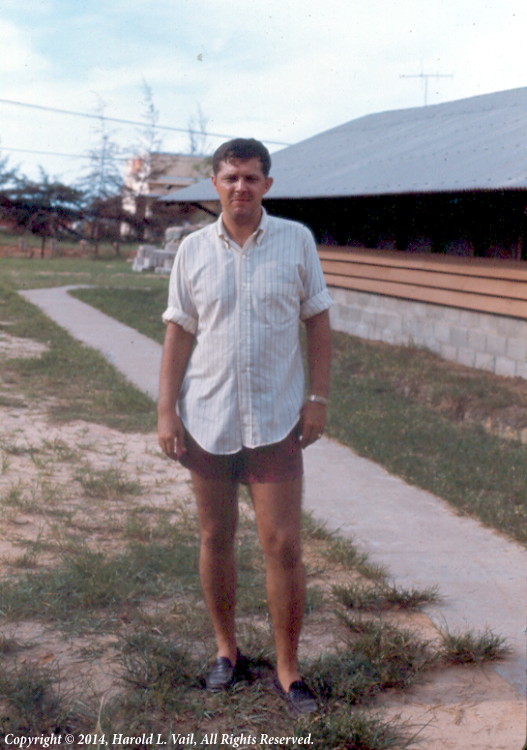
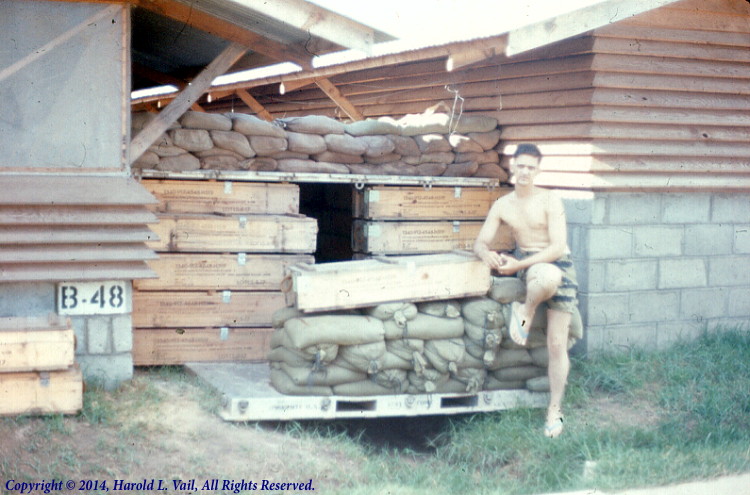
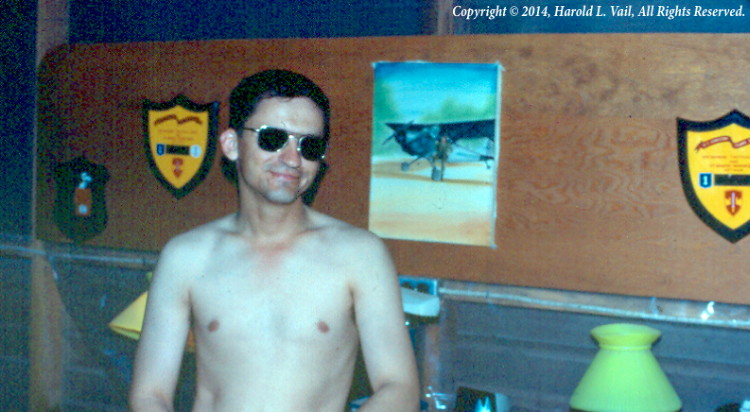
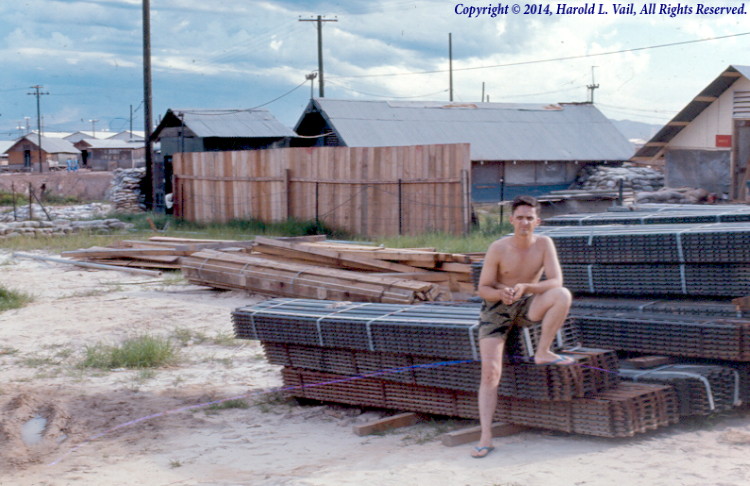
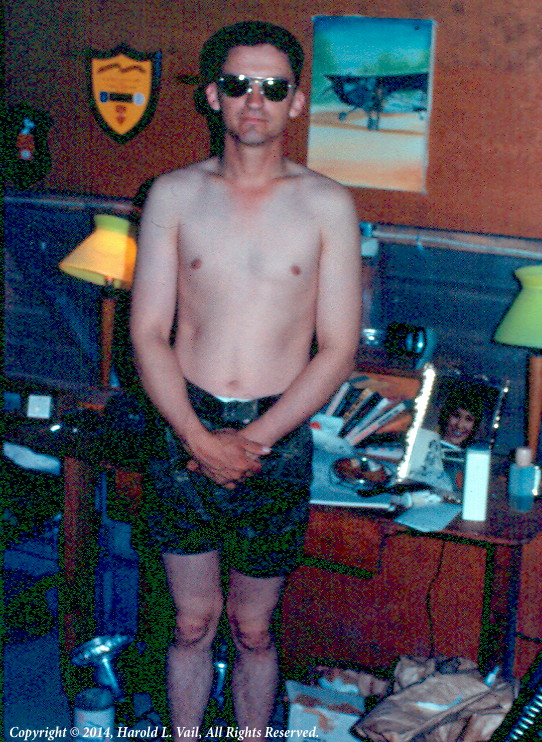
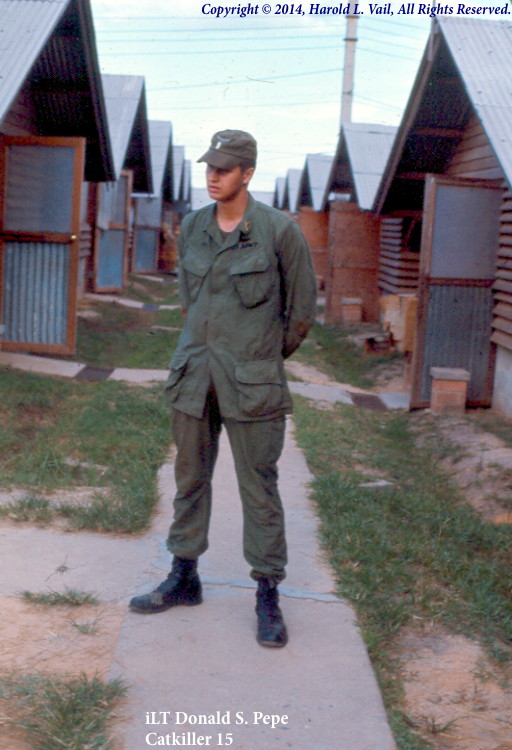
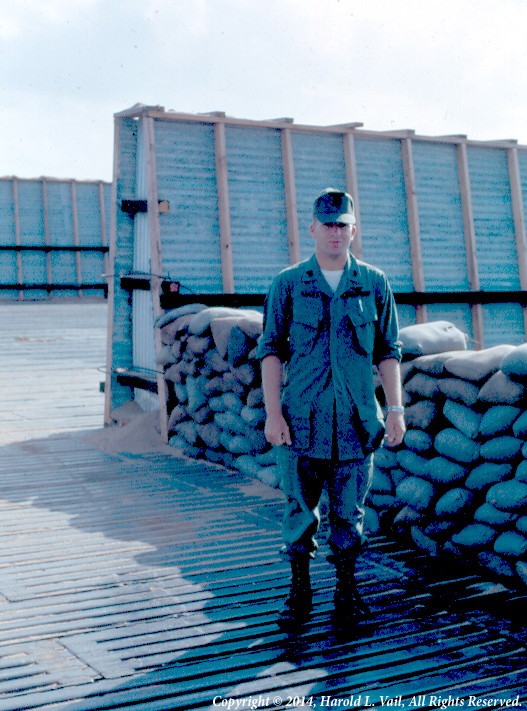
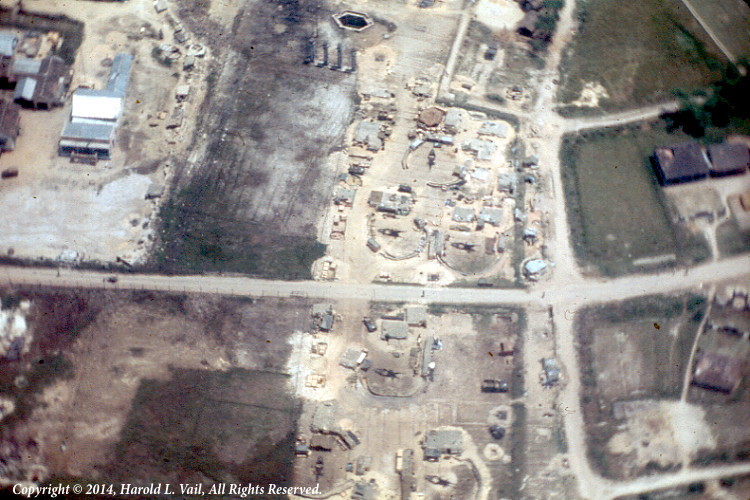
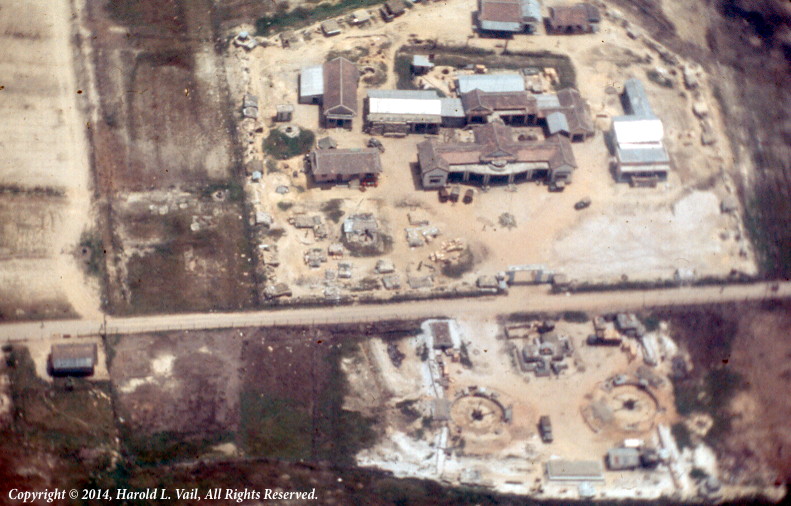
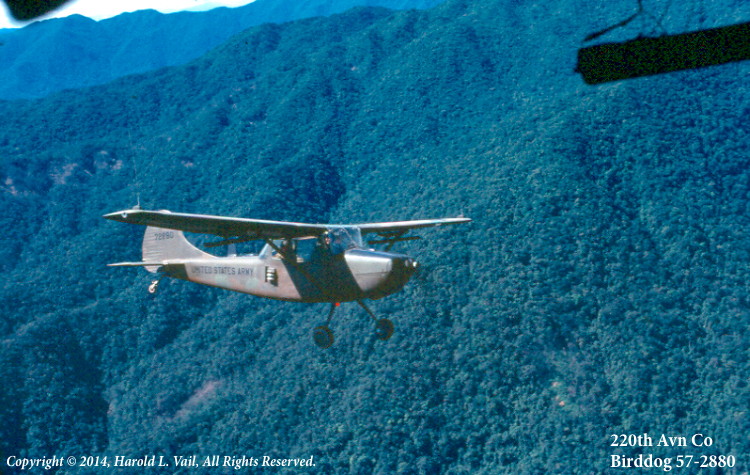
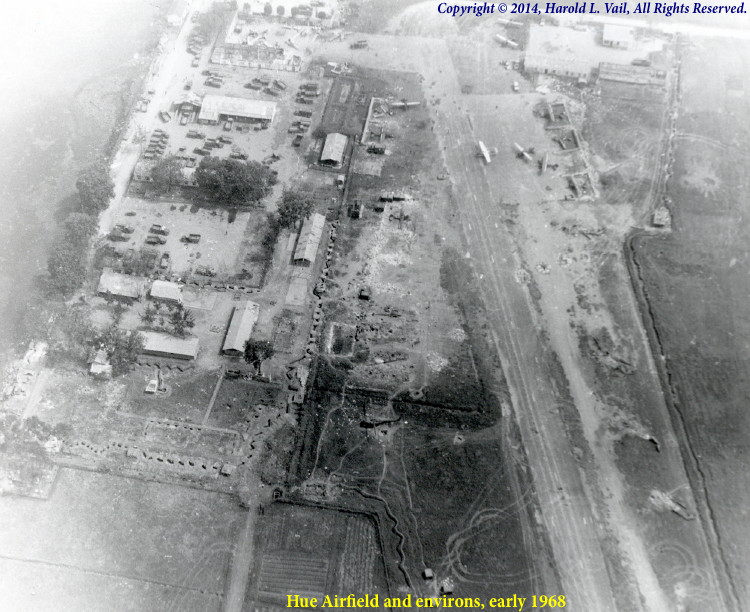
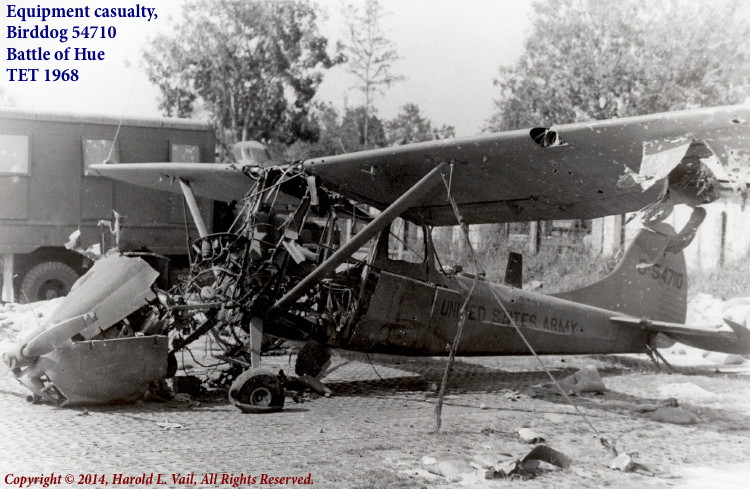
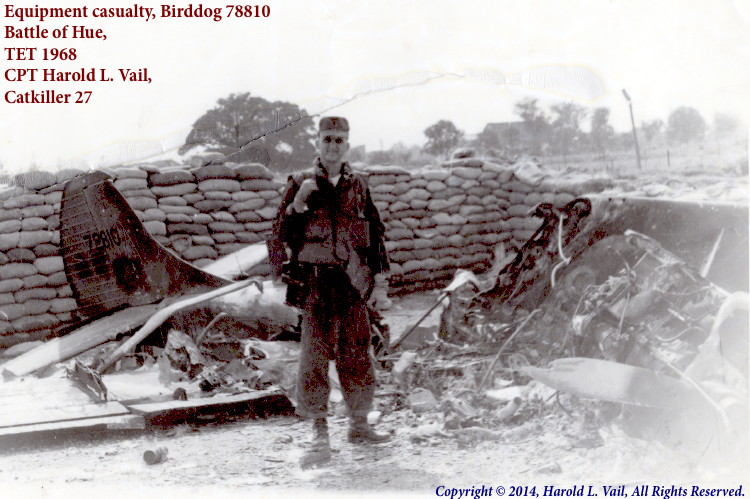
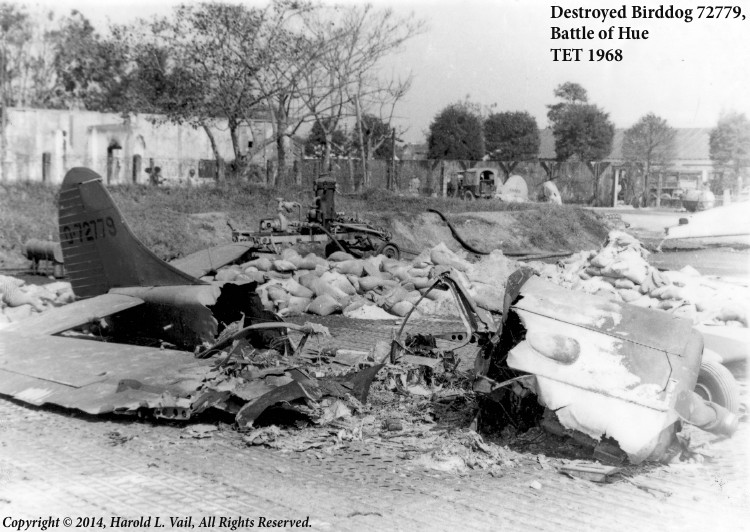
ADDITIONAL COMMENTS:
Here’s two pictures of the Hue airfield that I took that might supplement Harold’s story. The first one shows damage and the second shows the west wall which is the direction the NVA swept in from. At the time, I can remember it being said that the NVA were already in and around the airfield and they were so disciplined that they let Harold drive away. Probably because their planned time of attack had not yet arrived. Harold picked up the nick–nickname Combat because he accidentally fired his CAR–15 as he was pulling it back inside the aircraft (he had been shooting at bad guys out the open side window) and he put a tracer round into his gas tank—nothing blew up!
Like he stated—he was destined to come home.
Ray Caryl
